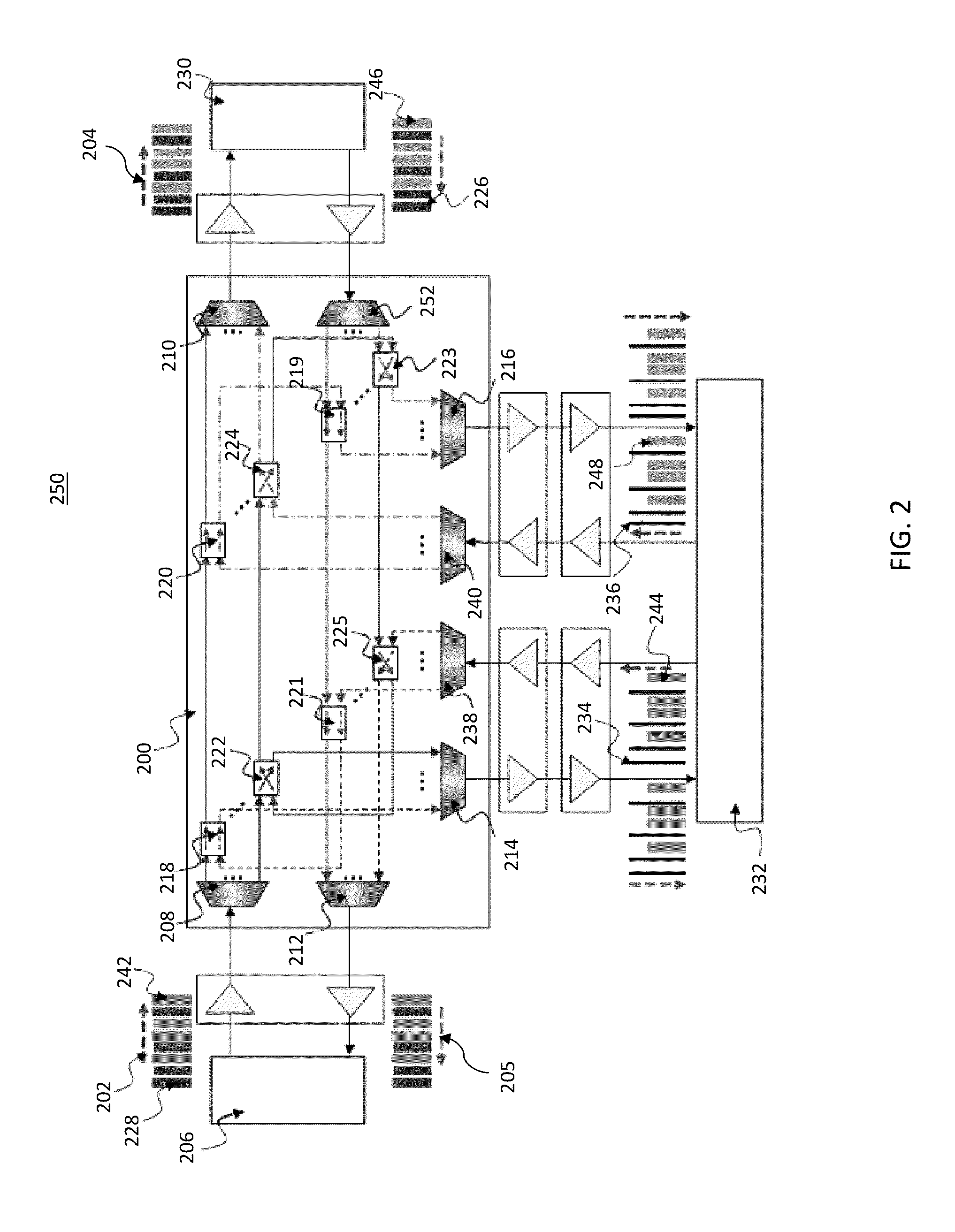Reconfigurable branching unit for submarine optical communication networks
a branching unit and optical communication technology, applied in multiplex communication, data switching by path configuration, electrical equipment, etc., can solve the problems of not being able to reconfigure during normal use, and being predetermined
- Summary
- Abstract
- Description
- Claims
- Application Information
AI Technical Summary
Benefits of technology
Problems solved by technology
Method used
Image
Examples
Embodiment Construction
[0025]In accordance with the present principles, a submarine optical communication network with reconfigurable branching units (BUs) is provided. The traffic in the global submarine optical network is becoming more dynamic. As a result, reconfigurability is desirable for the next generation submarine network branching unit. Comparing to the reconfigurable optical add / drop multiplexers used in the terrestrial network, the branching unit for submarine network have additional requirements such as latching operation and amplifier power balancing. While it is contemplated that various BU architectures may be employed according to the present principles, three (3) illustrative reconfigurable branching unit architectures will be discussed herein.
[0026]The WSS-based reconfigurable BU architecture offers the highest level of reconfigurability; but it does not employ a latching feature. The other two architectures, namely the bidirectional distributed shared memory (DSM) architecture and the ...
PUM
 Login to View More
Login to View More Abstract
Description
Claims
Application Information
 Login to View More
Login to View More - R&D
- Intellectual Property
- Life Sciences
- Materials
- Tech Scout
- Unparalleled Data Quality
- Higher Quality Content
- 60% Fewer Hallucinations
Browse by: Latest US Patents, China's latest patents, Technical Efficacy Thesaurus, Application Domain, Technology Topic, Popular Technical Reports.
© 2025 PatSnap. All rights reserved.Legal|Privacy policy|Modern Slavery Act Transparency Statement|Sitemap|About US| Contact US: help@patsnap.com



